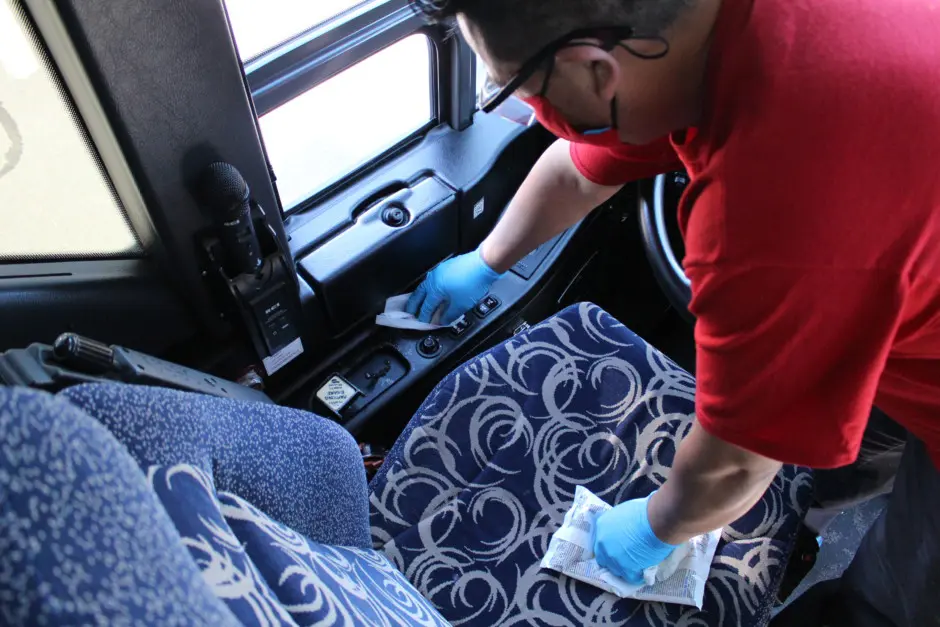Although the ongoing pandemic has forced many employers to turn to remote work, some industries have continued to operate as usual― particularly public transportation. One of the most popular modes of public transportation are buses, which are known for their affordability and flexibility.
Employees that do not have the luxuries of working from home or driving their own vehicle continue to rely on buses for their commute, but how can they stay safe by doing so? With strict social distancing protocols still in place, the number of passengers allowed on buses are now limited, but having a limited capacity is not enough.
Cleaning and Disinfecting the Bus
According to the Centers for Disease Control, these are best practices for bus cleaning, disinfecting, and keeping everyone onboard as safe as possible during the pandemic1:
- Individuals must wear disposable gloves when cleaning, and other available personal protective equipment
- Clean and disinfect commonly touched surfaces at the beginning and end of each shift and between transporting passengers who are visibly sick
- Hard, non-porous surfaces such as hard seats, arm rests, door handles, seat belt buckles, light and air controls, doors and windows, and grab handles must be cleaned with detergent or soap and water prior to disinfecting
- Recommended disinfectants include the EPA’s registered antimicrobial products, diluted household bleach solutions, and alcohol solutions with at least 70% alcohol
- Ensure that cleaning and disinfecting procedures are followed consistently and correctly
- Allow for sufficient ventilation on the bus when chemicals are in use
- For soft or porous surfaces such as fabric seats, remove visible contamination, clean with appropriate cleaners, and finish with the EPA’s registered antimicrobial products specifically for porous surfaces
Onboard Safety
Regarding the safety of bus transit operators, it is recommended that they wear an N95 respirator or facemask, along with a face shield or goggles as long as those do not interfere with driving. As for the safety of passengers, they must continue to wear facemasks or cloth face coverings. The CDC advises to consider making foot-traffic single direction in narrow or confined areas in the bus to encourage single-file movement at a 6-foot distance. Placing hand sanitizers with at least 60% alcohol in multiple locations throughout the bus is also recommended2. As always, avoid touching your eyes, nose, and mouth with unwashed hands and stay home if you experience any of the following symptoms:
- Fever
- Cough
- Shortness of breath
- Chills
- Sore throat
Contact Us
If you believe a passenger showing COVID-19 symptoms has recently boarded your bus and are interested in a professional cleaning, schedule a free consultation with us by filling out this form and we will get back to you as soon as possible.

